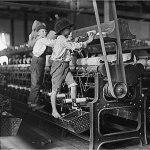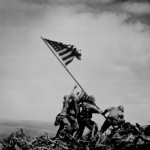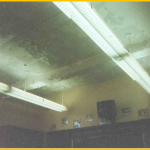What do Documentary Photographers do?
Documentary photography is used to record and detail the world around us. Documentary photographers record significant and historical events that provide an opportunity for us to examine and reflect on current events. The documentary photographer is typically a professional, but may also be an amateur.
Documentary photographers use the power of images to educate society, keep an issue alive, and encourage action. With public exposure, and appropriate timing, leaders may take notice and do something. Below are documentary photos that educated and encouraged change.
Click on these documentary photos to reveal the condition or issue it exposed.

This photograph was taken in 1936 and is known as “Migrant Mother”. It was taken by documentary photographer Dorothy Lange when she worked for the Farm Security Administration. Her job was to document the working conditions of people in some of the farming areas of California. Dorothy Lange’s comments on ‘Migrant Mother’ photograph: “I saw and approached the hungry and desperate mother, as if drawn by a magnet. I do not remember how I explained my presence or my camera to her, but I do remember she asked me no questions. I made five exposures, working closer and closer from the same direction. I did not ask her name or her history. She told me her age, that she was 32. She said that they had been living on frozen vegetables from the surrounding fields, and birds that the children killed. She had just sold the tires from her car to buy food. There she sat in that lean-to tent with her children huddled around her and seemed to know that my picture might help her, and so she helped me. There was sort of an equality about it.”

The photographs of Lewis Hine and others began to paint a picture of young people being used in work settings and unsafe situations. As a result of the work of Lewis Hine and the National Child Labor Committee, child labor laws were passed in 1938 to protect the health and safety of young people in America. This photo is of two young people around the age of ten that were working in a textile mill in Georgia. Original photo caption from Lewis Hine: Some boys and girls were so small they had to climb up on to the spinning frame to mend broken threads and to put back the empty bobbins. Bibb Mill No. 1. Macon, Ga.

The caption of this photo, also taken by Lewis Hine, read, “In center of the picture is Phoebe Thomas, 8 year old Syrian girl, running home from the factory all alone, her hand and arm bathed with blood, crying at the top of her voice. She had cut the end of her thumb nearly off, cutting sardines in the factory, and was sent home alone, her mother being busy. The loss of blood was considerable, and might have been serious.” The photographs of Lewis Hine and others began to paint a picture of young people being used in work settings and unsafe situations. As a result of the work of documentary photographers child labor laws were passed in 1938 to protect the health and safety of young people in America.

(Raising the flag on Iwo Jima, 1945) This is one of the most indelible images of World War II. This Pulitzer winning photo has often been used to represent American heroism.

(Afghan Girl, 1984) This young woman's face became one of the most iconic National Geographic covers of all time, and a symbol of the struggle of refugees everywhere.

Baltimore youth photo of a bad ceiling in his school. “Middleton Middle Is a bad school. The ceiling is falling apart and it is not good.” Joshua J. Photo taken by a youth of one of the first ever photovoice projects done with young people. Baltimore, Maryland. Josh and his friends held a photo exhibit that was attended by members of the local school board and state officials. They saw the condition of the ceiling in the school and vowed to take action to have it fixed.
